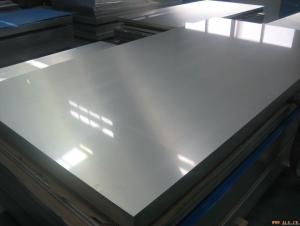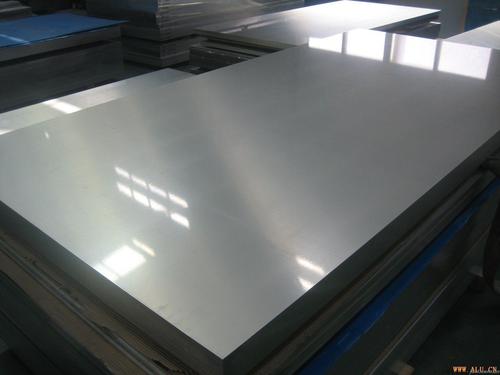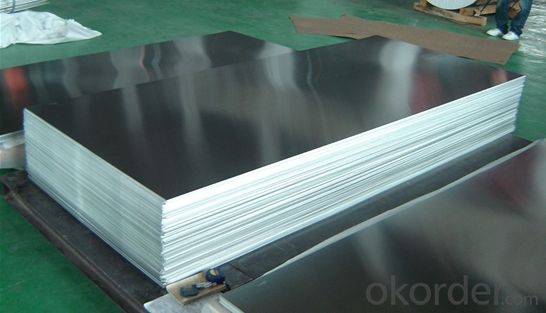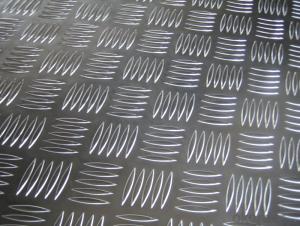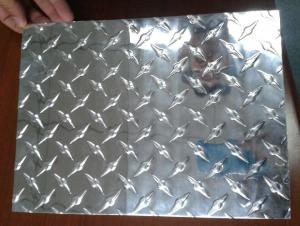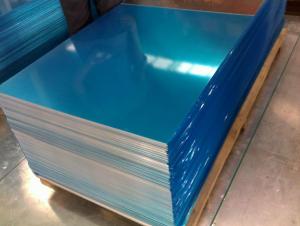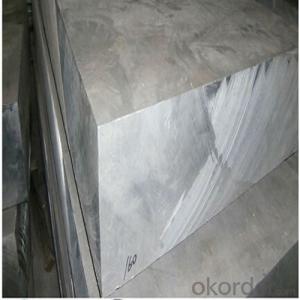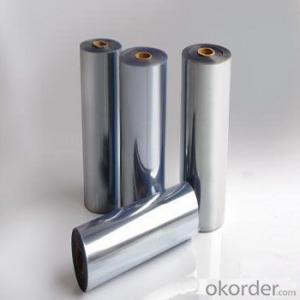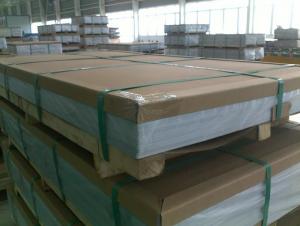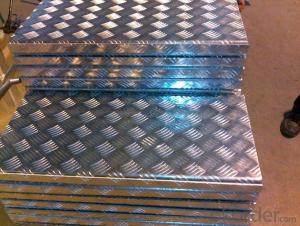Aluminum Sheets California - 5000 Aluminium Sheet GB3008 Standard
- Loading Port:
- Shanghai
- Payment Terms:
- TT OR LC
- Min Order Qty:
- 4 m.t
- Supply Capability:
- 3000 m.t/month
OKorder Service Pledge
Quality Product, Order Online Tracking, Timely Delivery
OKorder Financial Service
Credit Rating, Credit Services, Credit Purchasing
You Might Also Like
1.Structure of Product Description
our aluminum sheet is widely used in the field of industrial application, etc.
2. Main features of the product
a.Competitive price
b.Frist-Class Service.
c. Shortest service.
3. Image.
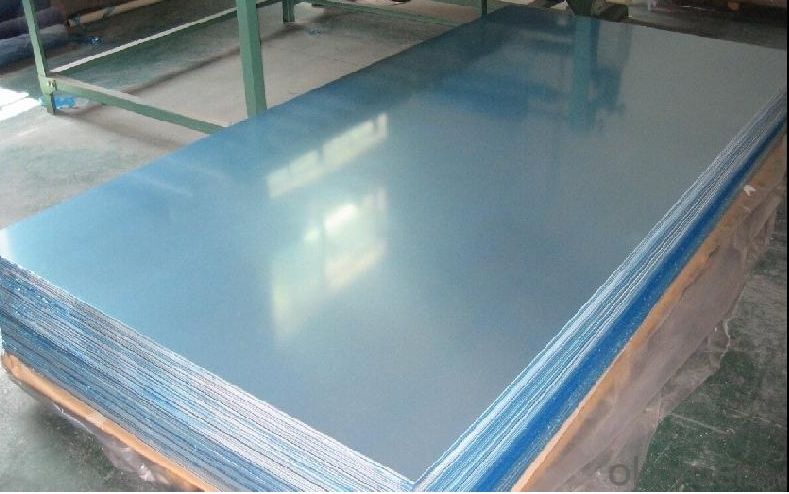
4. Product detailed sizes:
5. FAQ:
What is the quality standard?
---Usually our standard is GB3880-2006 or others.
What is the width range?
---It is from 1000mm to 2500mm, etc.
- Q: (1) Aluminum is malleable. (2) Aluminum reacts with sulfuric acid.(3) Aluminum conducts an electric current.(4)Aluminum has a density of 2.698 g/cm3 at STP.Explain why.
- The answer is statement 2 Reasons why: First, know that a chemical property of any element is something that results in the change of the chemical make-up of the element. The word for word definition in my textbook says: a chemical property is the ability of a substance to combine with or change into one or more substances through a change in the chemical formula for the substance Looking at all the other options: Statement 1: Whether or not a substance is malleable is whether or not a substance can be hammered or pressed out of shape and not break or shatter. Hammering a substance, or in this case Aluminum, does not change any chemical formula of Aluminum, it just changes the physical shape of the metal. Statement 3: If a substance is conductive of electricity, it means that the material can transport an electric current. This is not chemical because the electricity simply goes through the substance, it does not change or react with any of the atoms of a substance and change the chemical formula. Statement 4: Density is a purely physical property because it is how dense a material is, and it doesn't change the formula of a substance. Therefore, Statement 2 is the best answer because by reacting with sulfuric acid, the chemical formula of aluminum changes since the atoms recombine with the atoms of sulfuric acid and create a new substance and a new chemical formula with it.
- Q: Can aluminum sheets be used in outdoor environments?
- Yes, aluminum sheets can be used in outdoor environments. Aluminum is highly resistant to corrosion and is known for its durability, making it a suitable material for various outdoor applications such as roofing, siding, and signage. Additionally, aluminum sheets can withstand exposure to weather elements like rain, sunlight, and temperature fluctuations, making them an excellent choice for outdoor use.
- Q: Are there any specific storage requirements for 101 aluminum sheets?
- Specific storage requirements exist for 101 aluminum sheets. To prevent moisture absorption and corrosion, aluminum sheets must be stored in a clean and dry area. Furthermore, a well-ventilated space is necessary to prevent the accumulation of potentially harmful gases. Proper stacking, with sufficient support and spacing, is crucial to prevent bending or deformation. Moreover, to avoid discoloration or fading, it is essential to shield the sheets from direct sunlight. A recommended practice is covering them with a suitable material, such as a plastic sheet or tarp, to offer an additional layer of protection. Ensuring appropriate storage conditions will uphold the quality and integrity of the aluminum sheets for their intended purpose.
- Q: What are the different surface treatments for aluminum sheets to improve corrosion resistance?
- Some of the different surface treatments for aluminum sheets to improve corrosion resistance include anodizing, chromate conversion coating, powder coating, and painting.
- Q: what's the size of gap while pressing 6mm aluminum sheet?
- choose the 8-10% of the thickness for two-sided gaps.
- Q: Is it possible to use aluminum sheets in environments with low temperatures?
- <p>Yes, aluminum sheets can be used in cold climates. Aluminum has excellent corrosion resistance and maintains its strength in low temperatures, making it suitable for use in cold environments. It does not rust or corrode easily, which is beneficial in harsh weather conditions. However, it's important to consider thermal expansion and contraction, as aluminum expands and contracts more than some other materials. Proper installation and design considerations are necessary to account for these properties in cold climates.</p>
- Q: Are aluminum sheets suitable for thermal insulation?
- Aluminum sheets, by themselves, are not suitable for thermal insulation. Despite aluminum's ability to conduct heat and electricity well, it lacks sufficient insulating properties. Surprisingly, instead of blocking heat, aluminum sheets can actually transfer it, rendering them ineffective for thermal insulation purposes. To achieve proper thermal insulation, it is common to use materials with low thermal conductivity, such as fiberglass, mineral wool, or foam boards. These materials are specifically engineered to trap air or establish a barrier that minimizes heat transfer, thus ensuring efficient insulation.
- Q: How do I cut aluminum sheets?
- To cut aluminum sheets, you will need a few tools and precautions. Here's a step-by-step guide to help you through the process: 1. Safety first: Always wear protective gear, including safety glasses, gloves, and a dust mask to protect yourself from the metal shavings. 2. Choose the right tool: There are a few options for cutting aluminum sheets, depending on their thickness. For thin sheets (up to 1/8 inch), a manual hand shear or a utility knife with a sharp blade can be sufficient. For thicker sheets, you may need power tools such as a jigsaw, circular saw, or a specialized aluminum-cutting saw. 3. Measure and mark: Use a measuring tape, ruler, or a straightedge to determine the desired size of the sheet. Mark the cutting line on the sheet using a permanent marker or a scribe. 4. Secure the sheet: Use clamps to secure the aluminum sheet firmly to a workbench or a cutting surface. This will prevent the sheet from moving during the cutting process, ensuring accurate cuts. 5. Cutting with a hand shear or utility knife: For thin sheets, start by aligning the cutting edge of the shear or utility knife with the marked line. Apply firm and even pressure to make a straight cut. If using a utility knife, you may need to score the sheet several times before it breaks off. 6. Cutting with power tools: If using a jigsaw, circular saw, or an aluminum-cutting saw, make sure you have the appropriate blade for cutting metal. Set the saw's cutting depth slightly deeper than the thickness of the aluminum sheet. Align the blade with the marked line and slowly guide the saw along the cutting path, ensuring a smooth and steady motion. Apply light pressure and let the saw do the work. 7. Finishing touches: Once the cut is complete, inspect the edge for any burrs or roughness. Use a metal file or sandpaper to smooth out any imperfections. Remember, practice caution and take your time when cutting aluminum sheets. It's always a good idea to test your cutting method on a small scrap piece before proceeding with the actual sheet.
- Q: Is it possible to substitute aluminum sheets for wood siding in construction?
- <p>Yes, you can use aluminum sheets to replace wood siding. Aluminum siding is a popular alternative to wood for several reasons. It is lightweight, durable, and resistant to rot, insects, and moisture. It also requires less maintenance than wood and can be painted to match various aesthetic preferences. However, it's important to consider factors such as insulation properties, cost, and the look you want to achieve, as aluminum may not perfectly mimic the appearance of wood. Always consult with a professional to ensure proper installation and compatibility with your home's architecture.</p>
- Q: What is the fatigue life of aluminum sheets?
- The endurance capacity of aluminum sheets pertains to the number of cycles the material can endure before failure arises under cyclic loading circumstances. Various factors, including the composition, thickness, surface finish, loading conditions, and environmental elements, can cause the endurance capacity of aluminum sheets to differ. Aluminum is renowned for its relatively high fatigue strength in comparison to other materials, rendering it a favored option in industries like aerospace, automotive, and construction. The endurance capacity of aluminum sheets is typically influenced by the presence of microstructural flaws, such as inclusions, voids, and grain boundaries. Fatigue tests are conducted, utilizing standardized procedures like ASTM E466 or ASTM E606, to ascertain the endurance capacity of aluminum sheets. These tests entail subjecting the material to cyclic loading conditions, usually at a consistent stress or strain amplitude, while monitoring the number of cycles required for failure to arise. The outcomes are then employed to generate an S-N curve, which represents the connection between the applied stress or strain amplitude and the number of cycles until failure. The S-N curve furnishes valuable insights into the endurance capacity of aluminum sheets, indicating the stress or strain levels at which the material can withstand a specific number of cycles before failure. It is crucial to note that the endurance capacity of aluminum sheets can be enhanced through various approaches, such as alloying, heat treatment, surface treatment, and appropriate design considerations. To conclude, the endurance capacity of aluminum sheets plays a pivotal role in the design of components or structures exposed to cyclic loading conditions. By comprehending the specific properties and characteristics of the aluminum alloy, coupled with proper testing and analysis, it is possible to ascertain the endurance capacity and guarantee the safe and dependable performance of aluminum sheets in diverse applications.
Send your message to us
Aluminum Sheets California - 5000 Aluminium Sheet GB3008 Standard
- Loading Port:
- Shanghai
- Payment Terms:
- TT OR LC
- Min Order Qty:
- 4 m.t
- Supply Capability:
- 3000 m.t/month
OKorder Service Pledge
Quality Product, Order Online Tracking, Timely Delivery
OKorder Financial Service
Credit Rating, Credit Services, Credit Purchasing
Similar products
Hot products
Hot Searches
Related keywords
